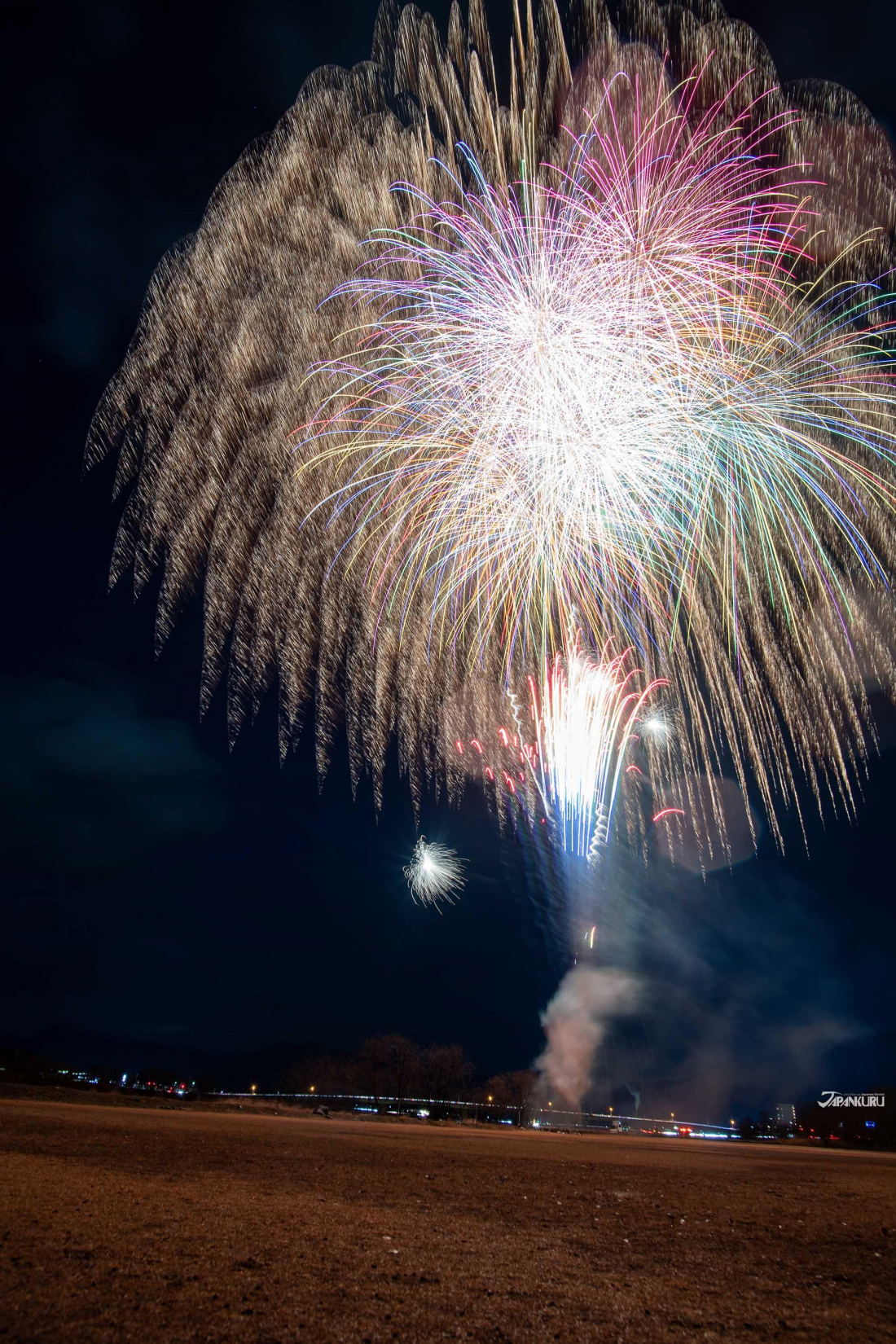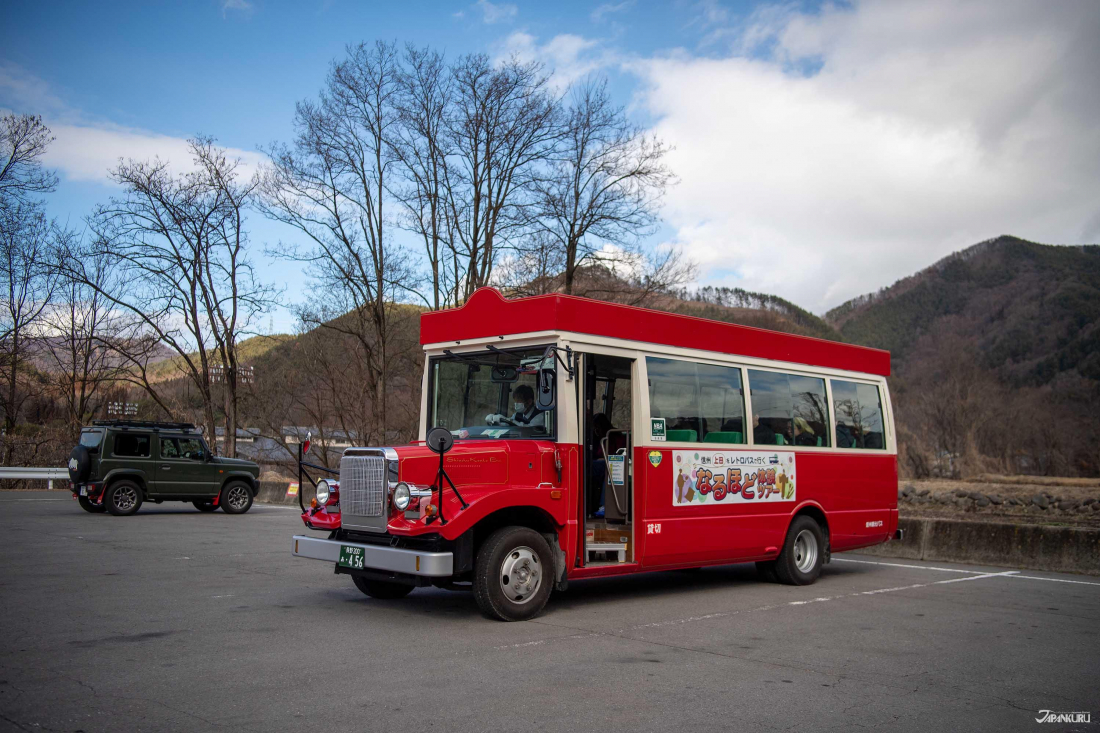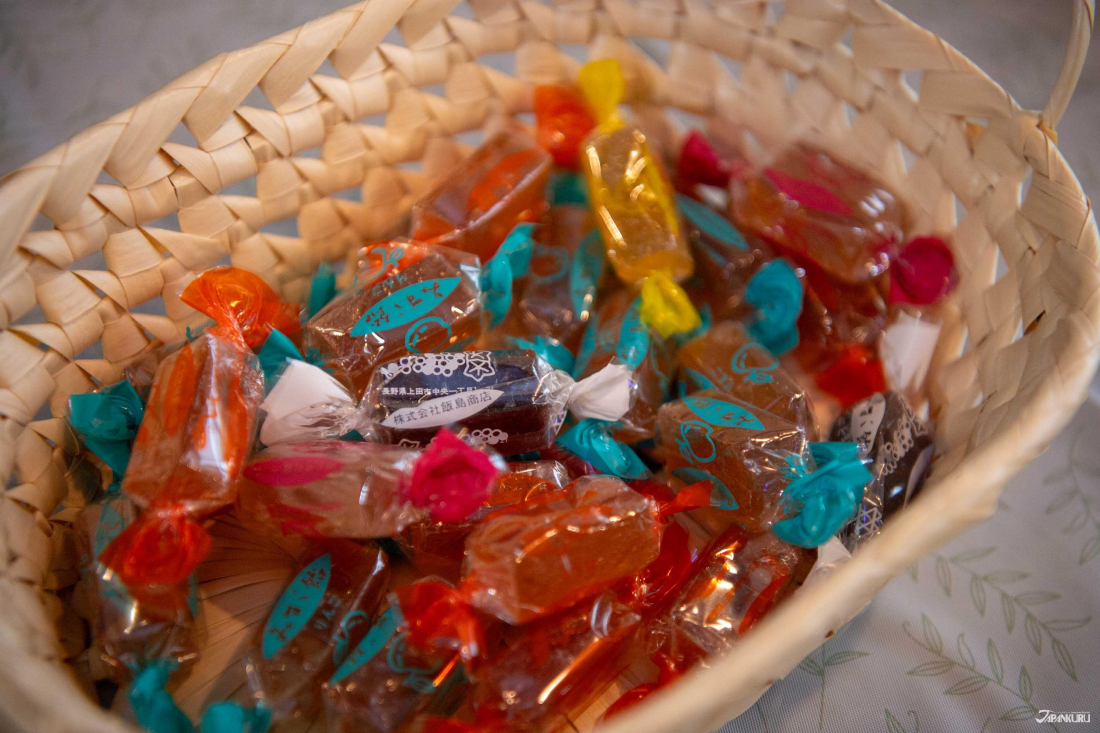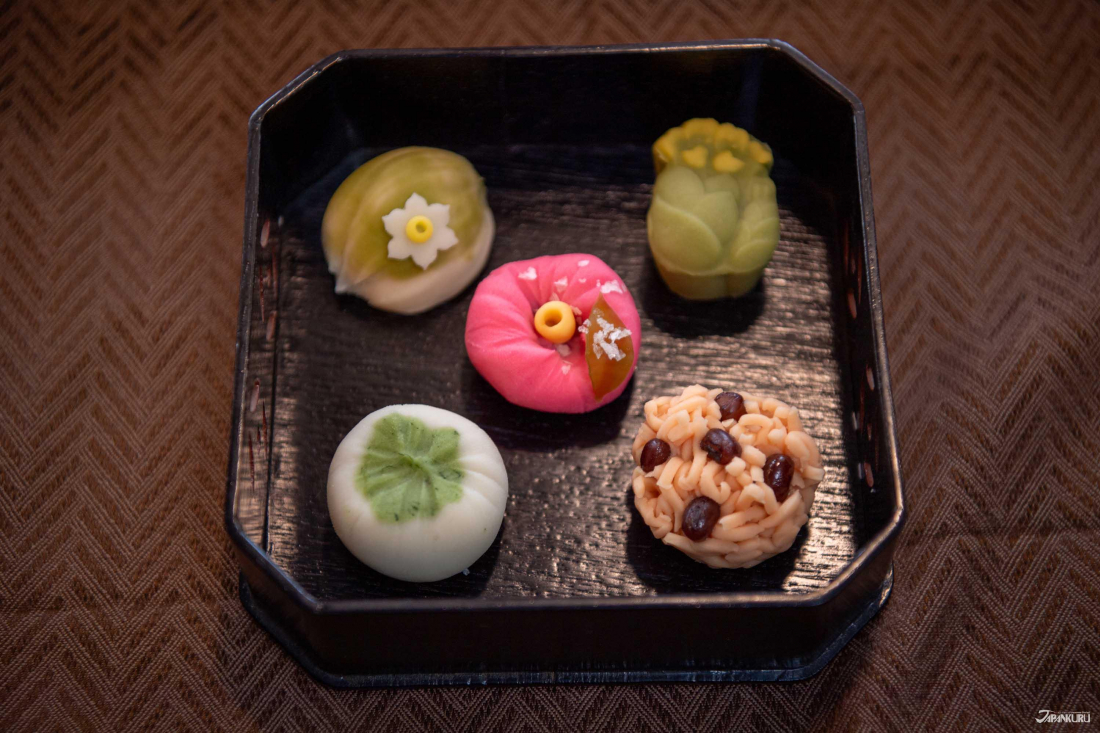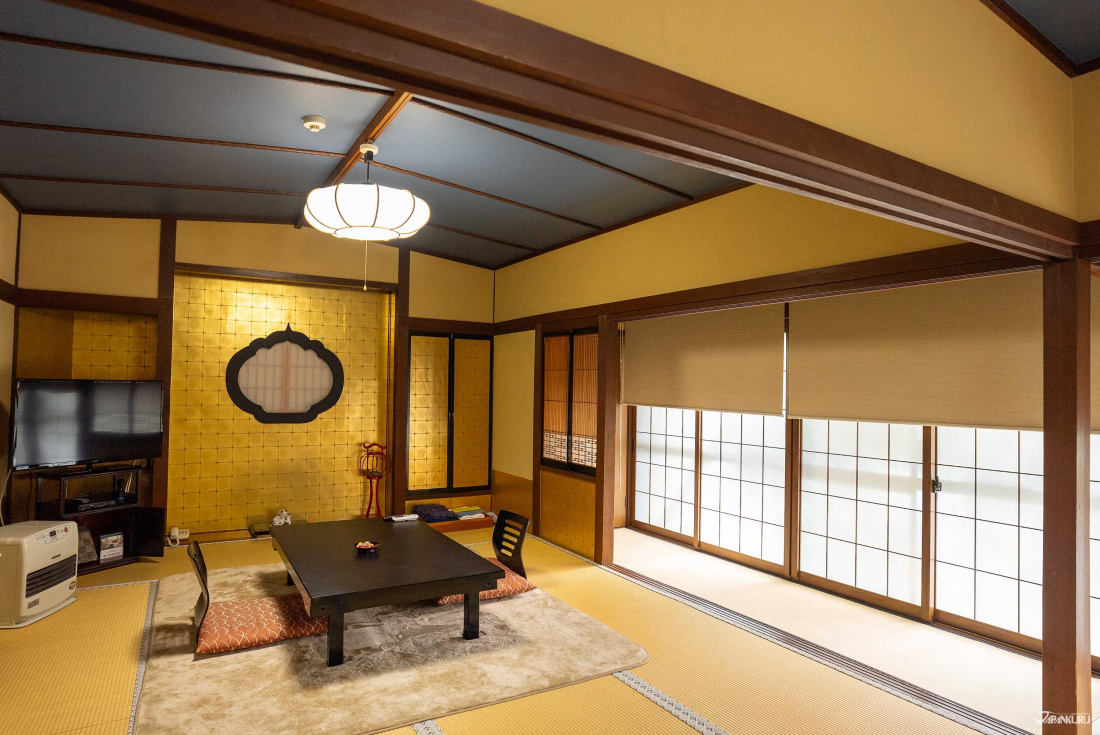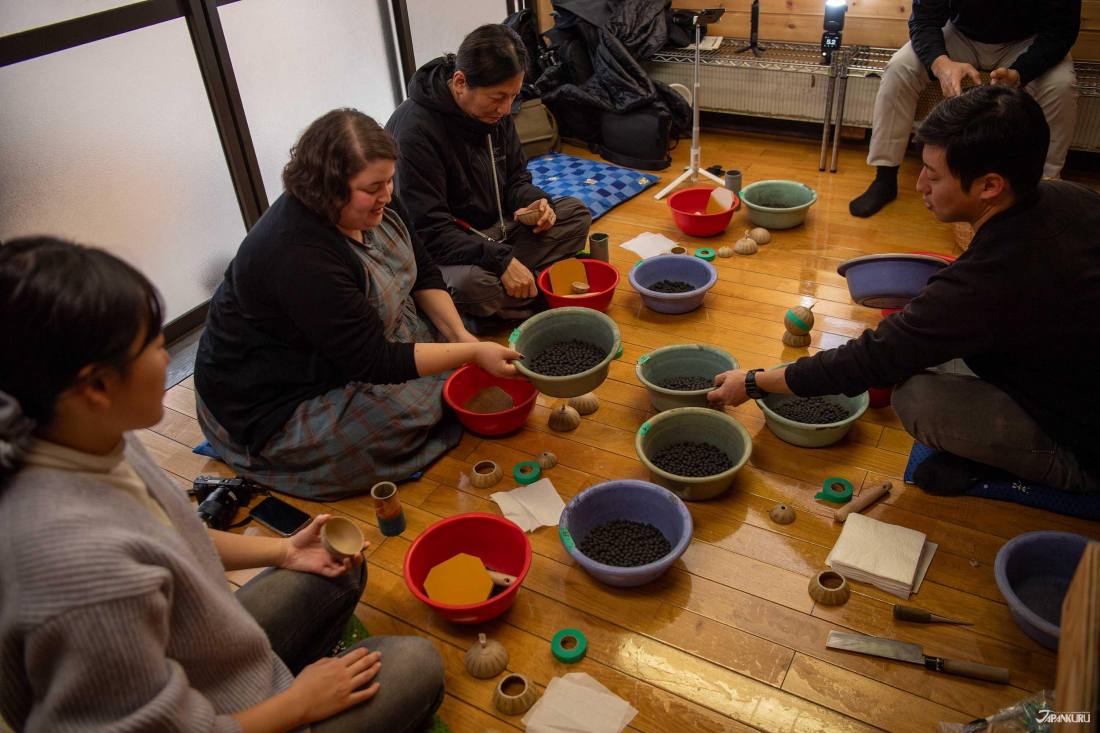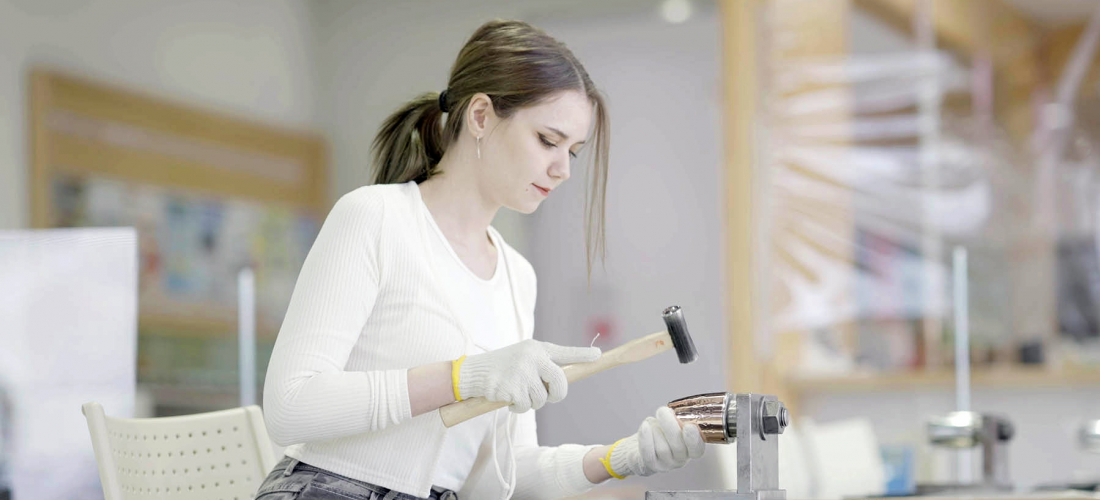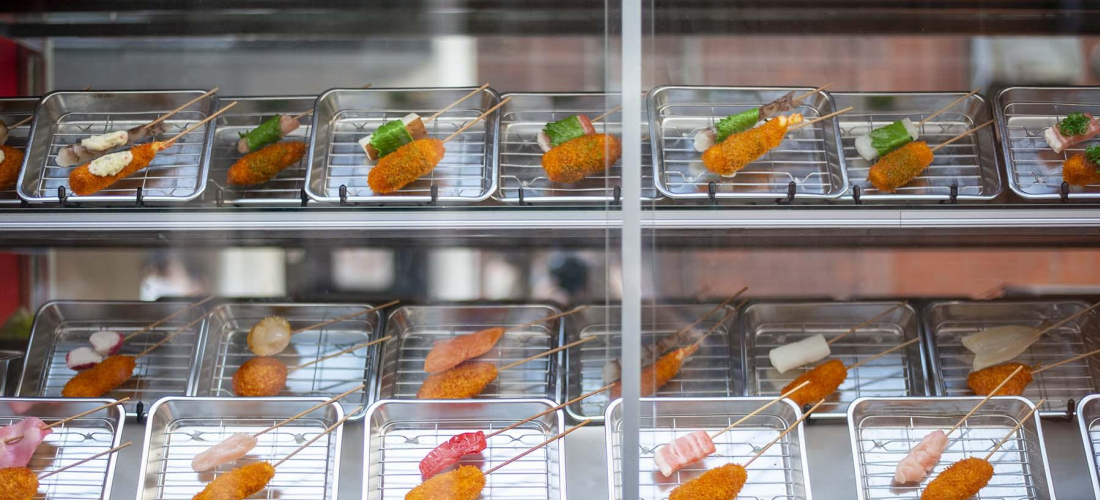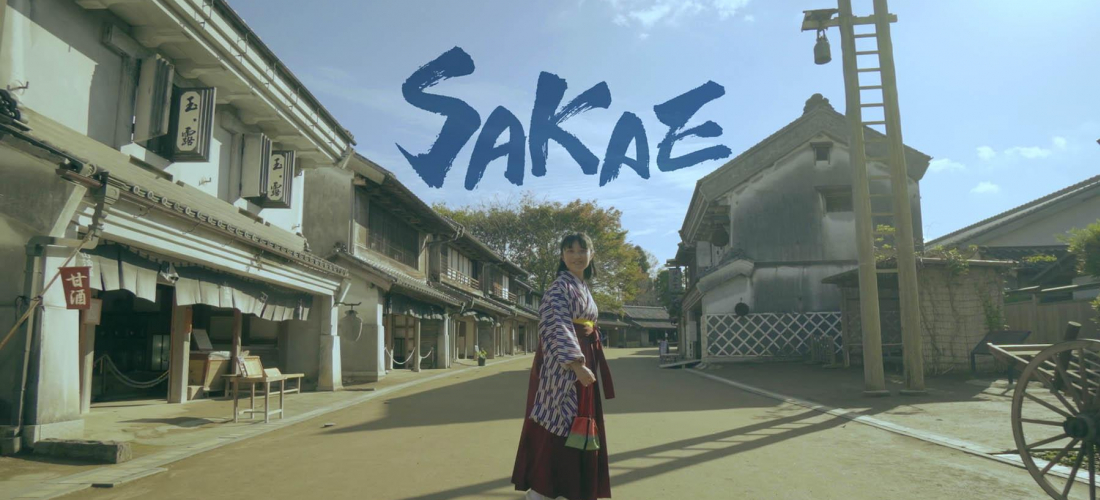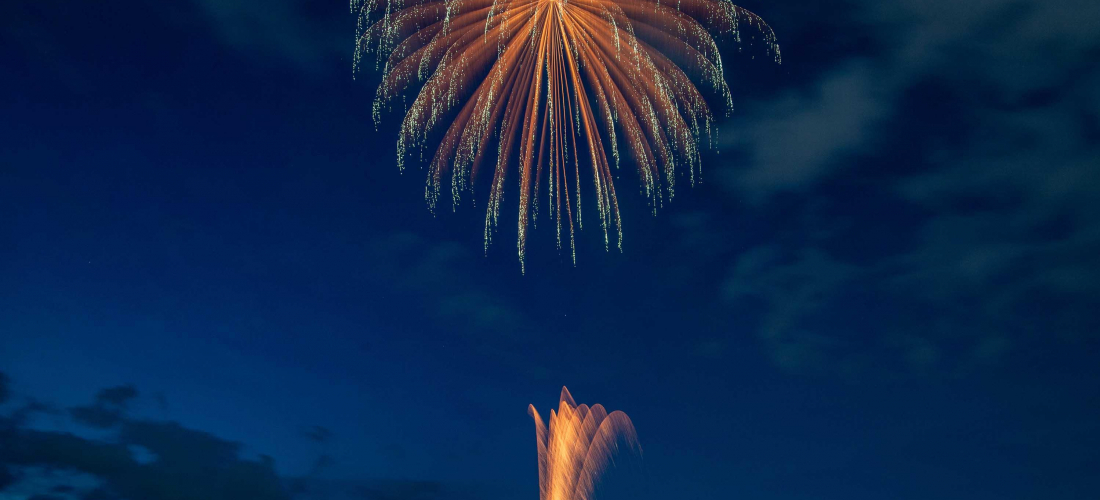
CONTENTS
Try this unique Japanese day tour to create fireworks with your own two hands and enjoy your own custom fireworks display, like a private Japanese festival! Ueda, Nagano is a day trip less than two hours from Tokyo by shinkansen, and you won’t find a fireworks making workshop like this anwhere else!
Ueda, Nagano: A Tokyo Area Destination We’d Almost Like to Keep a Secret
For those with niche interests, the city of Ueda might spark a memory thanks to its involvement in the 1998 Nagano Winter Olympics, or its use as the setting of the popular anime film Summer Wars. But this little city in Nagano is more than just a backdrop! Ueda has many of the things you look for when traveling in Japan, including a history packed with real samurai and ninjas, hot springs in use for over 1,400 years, mountains covered in white snow ripe for skiing, and starry night skies. It also has one big advantage as a destination for short-term sightseers: it's close enough to make a good day trip destination from Tokyo. (Ueda is only an hour and a half from Tokyo by shinkansen.) With so much off-the-beaten-path charm, it's tempting not to share this hidden destination with the world, but we think it will fit perfectly into the itinerary of any traveler looking to get away from Tokyo for a day and see another side of Japan.
Within Japan, on the other hand, Ueda is known for its summertime fireworks. The Shinshu Ueda Fireworks Festival is put together every year by three Japanese fireworks companies, and the breathtaking display is launched over a local river, with viewing areas so close to the action that each firework hits with an outsized impact. And in this city famous for fireworks, a local firework manufacturer is now offering travelers a one-of-a-kind opportunity to try firework manufacturing for themselves, in the form of a unique day trip tour with a fireworks making workshop. Join us as we try this once-in-a-lifetime fireworks day trip tour for ourselves, to try our hands at explosives and get hands-on with custom fireworks, and enjoy a little local Ueda flavor while we're there!
JR Ueda Station (JR上田駅)
1-1-1 Tenjin, Ueda, Nagano
Access: 1½ hours from Tokyo Station via the Hokuriku Shinkansen (approx. 6,260 yen)
Ueda Fireworks Workshop Day Trip Tour
At its heart, this tour is all about the fireworks, but the itinerary offers a full day of fun around Ueda, dipping into local history and Nagano cuisine!
9:15 Gather at Ueda Station / 9:30 Bus Departs
The easiest way to get to Ueda is to take the shinkansen, which goes straight from Tokyo Station to Ueda Station in about an hour and a half. This particular route isn't usually all that crowded, so you're usually safe buying a ticket from the machine in the morning and sitting in one of the non-reserved cars, but if you prefer to reserve your shinkansen seat you can also purchase your tickets online in advance.
10:00 ~ 12:00 Fireworks Making Workshop
The morning starts with the highlight of this Ueda itinerary, because the fireworks you make during the tour need to go through a series of finishing processes (drying, etc.) between the workshop time and the final launch. So first thing in the morning, each participant gets hands-on right away, starting by choosing a color and carefully placing each little firework "star" inside a round shell. These pyrotechnic stars are the little parts that create vibrant colors in the sky, and you can choose your favorite (or mix a couple) from a selection including pink, red, green, yellow, and special sparkly varieties that crackle before they fizzle out. The multi-step process includes lining the shell with stars, stuffing the center with black powder, tapping everything perfectly into place, and finally taping it up to create a finished firework. It's one thing to go see fireworks at a festival or a theme park, but it's totally different to make them yourself – it's not an opportunity you're likely to find anywhere else!
The fireworks you make during the workshop look pretty big in the sky, but the size of the finished product pre-launch is only about as big as a fist. Fireworks, it turns out, can vary a lot in size! Before you leave the fireworks factory, make sure you check out the sample fireworks shells they keep on hand, to see how big the fireworks they use in the Shinshu Ueda Fireworks Festival actually get. It's a little like a fireworks museum!
Afternoon
12:45 ~ 14:00 Soba Noodle Cooking Lesson
Time really flies when you're elbow-deep in fireworks and your hands are turning black from the stars, but before you know it it's time to scrub those fingers clean and move on to lunch at the Yukimura Yume Workshop. This unique space has a shop selling locally produced foods and souvenirs, free electric bike rentals for sightseers, and above all else, cooking lessons where you can make your own soba noodles from scratch and enjoy them for lunch! Soba noodles are made from buckwheat flour, and all the buckwheat used for these cooking lessons is grown locally in Ueda, where the buckwheat is said to be especially delicious thanks to the local climate, with large temperature differences during the day and night. As you might suspect, the Ueda area has plenty of restaurants offering soba, but nothing tastes as good as a batch of noodles made entirely from scratch and boiled within minutes – especially when you yourself measure out the buckwheat flower, mix and knead the dough, and slice each noodle into shape. Enjoy them with a simple dipping sauce to really savor the flavor! (On your way out of the Yukimura Yume Workshop, you can check out the souvenirs as well.)
Yukimura Yume Workshop (ゆきむら夢工房)
6090-1 Sanadamachiosa, Ueda, Nagano
Hours: 8:30 – 17:15 (closed over the New Year's holidays)
14:30 ~ 17:00 Explore the Ueda Castle Ruins, Anrakuji Temple, & the Bessho Onsen Neighborhood
There's nothing better than a leisurely walk after lunch, and this walking tour takes you on a route through some of Ueda's most historic areas. Back in the Sengoku period (1467-1568) Ueda was the domain of Sanada Yukimura, a widely beloved samurai whose fame has earned him titles such as "The Last Sengoku Hero," or even "The Number One Warrior in Japan." And even now, hundreds of years after Yukimura's death in the Battle of Tennoji, the samurai can still be found all over the city, painted on walls, standing tall in bronze statues, smiling cutely as an illustrated character, and scattered throughout every local souvenir shop. Among the ruins of Ueda Castle, once inhabited by Yukimura and his Sanada clan family, you might even be able to meet the great samurai and his retainers themselves, as if they'd walked straight out of history.
Afterwards, explore the quaint Bessho Onsen area surrounding Nagano's most historic hot spring (people have been soaking in the waters for 1,400 years), and visit Anrakuji to see hints of Heian-era (794-1185) Buddhist culture. This ancient temple has an iconic Dainichi Nyorai statue, and a grand octagonal pagoda that's the only one of its kind in Japan.
Ueda Castle Ruins (上田城跡)
2 Ninomaru, Ueda, Nagano
Bessho Onsen Area (別所温泉)
Besshoonsen, Ueda, Nagano
Anrakuji Temple (安楽寺)
2361 Besshoonsen, Ueda, Nagano
Evening
18:00 ~ 18:30 Enjoy the Handmade Fireworks Viewing Party
As the sun begins to set and the day comes to a close, it's finally time for the tour's grand finale, with the launch of the fireworks made during the morning's workshop. This isn't your average firework display, because you not only get to enjoy the beauty of each colorful explosion (and revel in the luxury of a private fireworks launch), but you also get to feel the pride that comes with seeing each beautiful firework made with your own two hands, or the hands of your fellow tour-mates. Participants are given the opportunity to shout their own wishes before their firework is launched, and the fireworks decorate the sky with the grandeur of the hopes and dreams of everyone involved. When the group's handmade fireworks have all been launched, the event ends with an added finale, put together using a selection of fireworks expertly made locally by Japan's leading pyrotechnic craftsmen!
Ueda Fireworks Workshop Day Trip Tour (上田市花火づくり体験ツアー)
Gathering Place/Time: JR Ueda Station Onsen Exit / 9:15 (~9:30 departure)
Time: Approx. 9½ hours in total (9:15 to 18:30~19:00)
Fee: adults 35,000 yen + 8,500 yen bus fee | under 18 years 8,800 yen + 8,500 yen bus fee
*Tour groups will be a minimum of 10, a maximum of 16 participants. Firework workshop participants will be divided into groups of four.
*Official website currently offline. Look out for the next batch of tours coming soon!
Discover More of Ueda’s Hidden Charms
The day trip above provides a great first look at Ueda, and includes some of the most spectacular experiences the city has to offer. But for those who want to see even more of Ueda and all its Japanese small-town charm, there's enough to keep you entertained for much longer than a day, and plenty of fun surprises to find. Here are a few additional Ueda recommendations!
Japan is known for local delicacies, and when Japanese people travel, they usually bring home local specialty foods as souvenirs. In Ueda, the go-to option for local sweets is misuzu-ame or misuzu candy (みすゞ飴), which have been made in the city for over 100 years. These fruity candies have a firm jelly texture, and each one comes covered in a thin film of edible rice paper only 0.02 mm thick, which melts in your mouth. Each of the half-a-dozen fruit flavors is made with fruit grown locally in Nagano, or in Wakayama to the south, and the addition of colorful packaging makes them a fun gift.
Misuzu-ame Hompo (みすゞ飴本舗)
1-1-21 Central, Ueda, Nagano
Hours: 10:00 – 18:00 (closed over the New Year's holidays)
Official Website (en)
When you think of Japan, you might imagine fierce samurai or swift ninjas, but these days you might also think of traditional "wagashi" (和菓子) sweets. Specialty shop Chino Wagashi is about a ten-minute walk from Ueda Station, and it offers a rotating selection of seasonal sweets, plus other fun perennial choices. There are little Japanese cakes supposedly shaped like the cornerstones of the Ueda Castle walls, and even some sweets made with interesting ingredients like tofu or soba (buckwheat).
Chino Wagashi (御菓子処千野)
3-2-18 Central, Ueda, Nagano
Hours: 9:30 – 18:00 (closed Wednesdays & on the Lunar New Year)
Official Website (jp)
Extra Ueda Experiences
Ever wanted to try meditation the way real Japanese monks do? Head to Nichirinji Temple for the real Soto Zen Buddhist experience, and join a "zazen" (座禅) meditation session first thing in the morning to start the day especially awake and alert. It's certainly very refreshing to clear your mind in a quiet room so far from the hustle and bustle of Japan's busy streets, and if you're worried about falling asleep, don't. For this variety of meditation, a supervising monk circles the room with an eye on participants. If there's reason to think you need it (or if you request it), he'll smack your shoulder with a firm and hearty thwack using a piece of flat wood, to help you concentrate on your meditation.
Tenshozan Nichirinji Temple (天照山日輪寺)
2-14-3 Central, Ueda, Nagano
Zazen Meditation Sessions: 1st & 21st of every month / 6:00 – 6:30
Official Website (jp)
"Bee Heaven" (蜂天国) is the only bee, wasp, and hornet museum of its kind in the whole world, thanks to a collection of about 600 enormous hives made by the Japanese yellow hornet. The museum has some educational displays, but it's mostly focused on what you might call "hive art," taking you into the world of the hornets and showing off hives of all shapes and sizes. There's a traditional Japanese shrine… dedicated to beehives, and a giant example of hive art in the shape of Mt. Fuji, in addition to the rooms upon rooms of large gives hanging off of every variety of object you could think of. The gift shop also sells a selection of different honeys, along with snacks and cosmetics made with honey and royal jelly. If you want to go a little bee crazy (or hornet mad), this is the place to do it.
Bee Heaven (蜂天国)
435-1 Kazawa, Tomi, Nagano
Hours: 9:00 – 17:00 (closed Wednesdays & New Year's holidays)
Admission: adults 300 yen | students 100 yen
Official Website (jp)
As a hot springs town, it would be a shame to stay for longer than a day trip in Ueda without enjoying a soak in an onsen, and the best way to do that is to stay in a traditional local ryokan. One homey option near Ueda Station is Jukyuan, an inn with roots dating back to the Meiji-era (1868-1912), and renovated rooms that provide a comfortably traditional place to stay the night. The ryokan's steaming-hot onsen baths are open every morning and night, and each room gets a chance to reserve them for private use!
Ueda Onsen Jukyuan (上田温泉祥園・寿久庵)
1-1-84 Ote, Ueda, Nagano
Check-in/Check-out: 14:00~ / ~10:00
Official Website (jp)
A New Choice for Tokyo Day Trips
There are many reasons to fill your itinerary with day trips when traveling overseas – going somewhere for the day means you can get out of the big city for a few hours, see somewhere totally different, travel without any excess baggage weighing you down, and know exactly where you're heading back to at the end of a busy day. Day trips are even easier when you get a tour schedule planned out for you, with all the local must-sees included. And this trip has all that, plus the addition of a one-of-a-kind workshop you're not going to find anywhere else. Making your own fireworks, and enjoying your own personal fireworks spectacular in small-town Nagano, isn't the kind of experience you're likely to forget anytime soon. If you're ready to get away from Tokyo, explore a little bit of the Japanese countryside, and enjoy a day trip that will leave memories to last a lifetime, hop on the shinkansen and make a trip to Ueda part of your itinerary!
▶︎ Find more Nagano travel information here!
For more info and updates from Japan, check Japankuru for new articles, and don't forget to follow us on X (Twitter), Instagram, and Facebook!
Details
NAME:Ueda, Nagano (長野県上田市)
PROFILE
Follow us @Japankuru on Facebook, Instagram, and Twitter!
COMMENT
FEATURED MEDIA
VIEW MORE
・Accommodations for Odaiba Sightseers: Mitsui Garden Hotel Toyosu PREMIER ・住宿推薦 三井花園飯店 豐洲普米爾 ・오다이바 관광 맞춤 숙소: 미츠이 가든 호텔 토요스 프리미어 ・ค้างคืนที่ Mitsui Garden Hotel Toyosu Premier โรงแรมสำหรับผู้มาเยือน Odaiba #japankuru #odaiba #tokyo #tokyotrip #japantrip #japantravel #mitsuigardenhotel #mitsuigardenhoteltoyosupremier #tokyohotel #odaibahotel #toyosu #tokyoview #tokyobay #rainbowbridge #미츠이가든호텔토요스프리미어 #오다이바 #오다이바맛집 #오다이바건담 #오다이바해변공원 #오다이바야경 #오다이바온천

Nagano Prefecture is famous for delicious soba noodles, and in the city of Ueda, you can learn from the experts! Local aunties run this cooking class, teaching you everything you need to know to make your own delicious plate of soba noodles entirely from scratch. #japankuru #soba #sobanoodles #japanesefood #travelexperience #japan #japantrip #ueda #nagano #japaneseculture #japanexperience #daytrip #daytour #cookingclass #japanesecookingclass #上田市 #そば作り #소바체험 #우에다시 #나가노여행 #일본소바

Kuramae Shrine is known for its early-blooming cherry blossoms and its gorgeous golden mimosa blooms, making it a great sakura spot for travelers arriving in Tokyo a little early for the main cherry blossom season. It’s also tucked away in a neighborhood packed with trendy cafes and coffee shops. Kuramae is a lovely place to spend the day. 🌸☕️ ・ #japankuru #kuramaeshrine #kuramae #tokyo #tokyotrip #cherryblossom #cherryblossoms #mimosa #tokyocherry #花見 #蔵前神社 #ミモザ #桜 #東京 #Japan #日本 #일본 #Japon #ญี่ปุ่น #Japão #Japón #япония #japantravel #日本旅行 #日本旅遊 #일본여행 #japan_of_insta #japantrip #traveljapan

Local Japanese Favorites at the Okinawa Don Quijote ② Ohta’s Isan, the digestive aid of the Japanese people ・ ・ 2024唐吉訶德不可不知的好物推薦② 日本國民消化小幫手:太田胃散 ・ ・ 오키나와 돈키호테 숨은 꿀템2. 일본 국민 소화제! 오타이산 #japankuru #okinawa #donki #沖縄 #오키나와 #오키나와여행 #오키나와돈키호테 #일본쇼핑리스트 #오타이산 #일본소화제 #太田胃酸 #ohtasisan

Happy Valentine's Day from the Japankuru team! May your day be full of sweet chocolates and sweet nothings. 💕 Or, if you're like a rising number of women in Japan, take the opportunity to treat yourself! 🍫💝💆 • Find out more at Japankuru.com! (Link in bio.) • #japankuru #valentinesday #valentineschocolate #japanesechocolate #japaneseculture #バレンタイン #バレンタインチョコ #メリーチョコレート #Japan #日本 #일본 #Japon #ญี่ปุ่น #Japão #япония #japantravel #日本旅行 #日本旅遊 #일본여행 #japan_of_insta #japantrip #traveljapan #japan🇯🇵 #japanlife #igerstokyo #explorejapan #japanfocus #enjoyjapan #japantravelphoto

Japankuru Coupon: BEAMS fashion, accessories, lifestyle goods, and more! BEAMS 5% Discount Coupon ▶︎ Validity Dates: February 1 ~ February 29, 2024 ▶︎ Discount: 5% off all products in-store ▶︎ Usable At: BEAMS stores throughout Japan (all stores except BEAMS JAPAN Izumo and BEAMS JAPAN Nikko) ▶︎ Details: Please present this coupon page before payment to receive your discount! This coupon is also valid in combination with tax-free discounts/refunds for foreign tourists. (Tax-free shopping is only available at some BEAMS locations.) Some products may not be eligible for discount. ・ ・ ・ BEAMS - JAPANKURU優惠折扣券 BEAMS 2024年2月限定特別優惠券 店內全部商品95折 ▶︎使用期間:2024/2/1到2024/2/29 ▶︎使用範圍:日本全國店舖 ▶︎使用方法:結帳時請務必事先向店員出示本優惠券,若未出示本優惠券恕無法享有本優惠。本優惠券可搭配免稅優惠一併使用,但不排除特定門市無法使用本優惠券。此外,不排除特定商品不適用本優惠券。 ・ ・ ・ 「빔즈(BEAMS) x 재팬쿠루(JAPANKURU)」스페셜 할인 쿠폰 빔즈(BEAMS) 5% 할인 쿠폰 ▶유효기간: 2024년 2월 1일 ~ 2월 29일(한 달 동안) ▶︎할인율: 매장 내 전 상품 “5% 할인" ▶︎해당 매장: 일본 전국 빔즈 (BEAMS) 매장 (BEAMS JAPAN이즈모、BEAMS JAPAN닛코는 쿠폰 할인 대상 제외 점포입니다) ▶︎상세 내용: 결제 전 본 쿠폰 페이지를 제시하면 정가대비 5% 할인된 금액에 구매하실 수 있습니다! 본 쿠폰은 외국인 관광객들을 대상으로 하고 있으므로 면세 혜택(빔즈 일부 매장)과 별도로 추가 할인이 가능합니다. (일부 매장 및 제품은 대상에서 제외될 수 있습니다.) #japankuru #beams #beamsjapan #beamsginza #coupon #재팬쿠루 #빔즈재팬 #빔즈 #일본여행 #일본쇼핑 #일본쇼핑리스트 #銀座 #東京 #tokyoshopping #japankurucoupon

